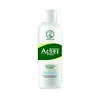What's inside
What's inside
 Key Ingredients
Key Ingredients

 Benefits
Benefits

 Concerns
Concerns

 Ingredients Side-by-side
Ingredients Side-by-side

Water
Skin ConditioningAlcohol
AntimicrobialButylene Glycol
HumectantZinc Oxide
Cosmetic ColorantSuccinic Acid
BufferingDisodium Succinate
MaskingO-Cymen-5-Ol
AntimicrobialMenthol
MaskingDisodium EDTA
Chondrus Crispus Extract
Skin Conditioning3-O-Ethyl Ascorbic Acid
Skin ConditioningPhenoxyethanol
PreservativeAloe Barbadensis Leaf Juice
Skin ConditioningPropylene Glycol
HumectantChlorphenesin
AntimicrobialHectorite
AbsorbentSodium Dehydroacetate
PreservativeAsiaticoside
AntioxidantCitric Acid
BufferingMadecassic Acid
Skin ConditioningAsiatic Acid
Skin ConditioningWater, Alcohol, Butylene Glycol, Zinc Oxide, Succinic Acid, Disodium Succinate, O-Cymen-5-Ol, Menthol, Disodium EDTA, Chondrus Crispus Extract, 3-O-Ethyl Ascorbic Acid, Phenoxyethanol, Aloe Barbadensis Leaf Juice, Propylene Glycol, Chlorphenesin, Hectorite, Sodium Dehydroacetate, Asiaticoside, Citric Acid, Madecassic Acid, Asiatic Acid
Ingredients Explained
These ingredients are found in both products.
Ingredients higher up in an ingredient list are typically present in a larger amount.
Aloe Barbadensis Leaf Juice comes from leaves of the aloe plant. Aloe Barbadensis Leaf Juice is best known for helping to soothe sunburns. It is also anti-inflammatory, moisturizing, antiseptic, and can help heal wounds.
Aloe is packed with good stuff including Vitamins A, C, and E. These vitamins are antioxidants, which help fight free-radicals and the damage they may cause. Free-radicals are molecules that may damage your skin cells, such as pollution.
Aloe Barbadensis Leaf Juice also contains sugars. These sugars come in the form of monosaccharides and polysaccharides, folic acid, and choline. These sugars are able to help bind moisture to skin.
It also contains minerals such as calcium, 12 anthraquinones, fatty acids, amino acids, and Vitamin B12.
Learn more about Aloe Barbadensis Leaf JuicePhenoxyethanol is a preservative that has germicide, antimicrobial, and aromatic properties. Studies show that phenoxyethanol can prevent microbial growth. By itself, it has a scent that is similar to that of a rose.
It's often used in formulations along with Caprylyl Glycol to preserve the shelf life of products.
Propylene Glycol is an odorless, colorless liquid. As a humectant, it helps skin retain moisture. It also aids in delivering active ingredients.
Another role of this ingredient is preventing a product from melting or freezing. Propylene glycol also adds antimicrobrial properties to a product, elongating product lifespan.
This ingredient is considered an organic alcohol and commonly added into both cosmetics and foods.
Those with sensitive skin or conditions may develop a rash when using this ingredient.
Learn more about Propylene GlycolWater. It's the most common cosmetic ingredient of all. You'll usually see it at the top of ingredient lists, meaning that it makes up the largest part of the product.
So why is it so popular? Water most often acts as a solvent - this means that it helps dissolve other ingredients into the formulation.
You'll also recognize water as that liquid we all need to stay alive. If you see this, drink a glass of water. Stay hydrated!
Learn more about Water